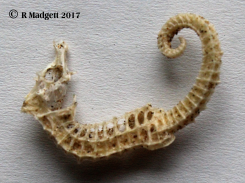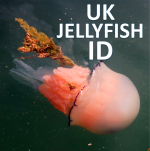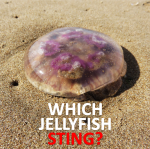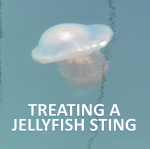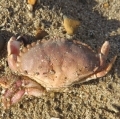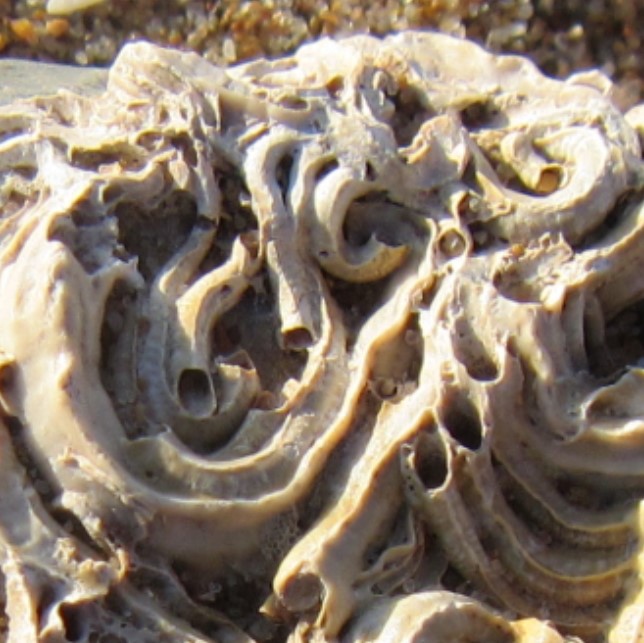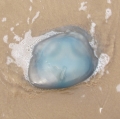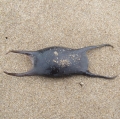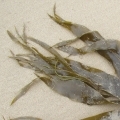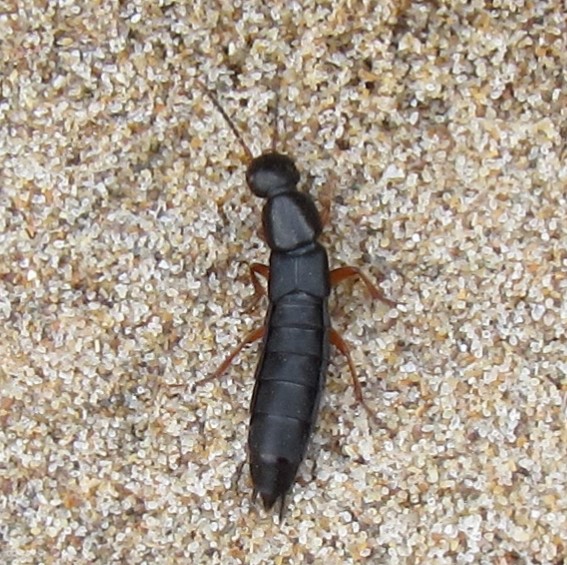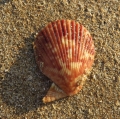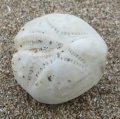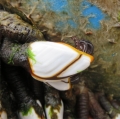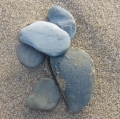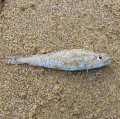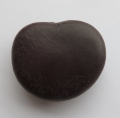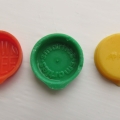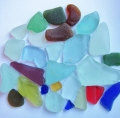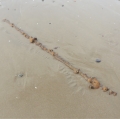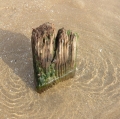

What happens to
beached jellyfish?

;
Each year there are reports of thousands of Moon Jellyfish (also known as Common Jellyfish) washing up on the west coast of England and Wales.



As soon as the jellyfish is dropped on the beach by the retreating tide, the jellyfish begins to die. A jellyfish breathes by taking in oxygen from the seawater through its skin so as soon as it is on dry land it can no longer live.
Sand hoppers, as can be seen from the open burrow holes around the jellyfish in the photo above, take an interest in the jellyfish - perhaps they are a source of refreshing water.

There is really nothing to jellyfish - a light skin, reproductive organs (the pink rings) and a digestive system (light brown material below the rings) and the rest is water. In fact, a jellyfish is about 95% water. Once on the beach, the water in the jellyfish evaporates, a process called deliquescing. After a few hours in the sun, the jellyfish is merely a faint imprint on the sand.


